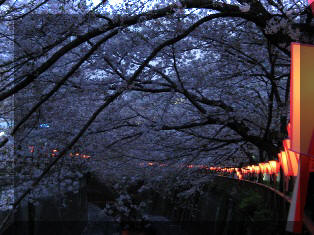

J-Pop Exchange Exclusive Interview with Masato Koike
Masato Koike J-Pop Exchange Radio Show Exclusive Interview
Transcript
OAD: 9/27/14
SeanBird (J-Pop Exchange):
Hi, thank you for taking the time to speak with us…
Masato Koike:
No, thank you very much for giving me this great opportunity.
SeanBird:
Did your interest in music begin in your childhood? How did you
become interested in music?
Masato Koike:
My father loved classical music - there was always classical music playing in my
home.
Now that I think about it, from the beginning, music was there, by
my side.
The time I really started to become conscious of music was when I
started playing games, listening to the game music.
SeanBird:
Please tell us about your musical studies and training.
Masato Koike:
Around the time I was an elementary school student, I took piano
lessons. It’s not rare in Japan to do this, at a basic level.
Also, after starting work, and for the purpose of work, I learned a
little of the flute for traditional Japanese music 'Nagauta'.
That was my entire musical education. As for composing, I'm entirely
self-taught.
SeanBird:
How and when did you decide to pursue a career in music? Was it
always your intention to pursue a career in music?
Masato Koike:
I think I always wanted to make games. When I was a junior high
school student, I made my own game and its music. I think that was
the thing that started my becoming aware of composing.
When I was in university, as part of a stage performance for our
club, I composed all of the music for the performance. It was the
first time I made music to accompany a story, and I'd never had such
an interesting experience before. Straight after that, I came to
think that I'd like to make composing my occupation.
SeanBird:
Can you give us some insight into your writing process? When you
compose music, how do you progress from inspiration to creation?
Masato Koike:
It's difficult to explain... … First, I recall the scenes and characters.
With a vague image of the entirety, I create the melody. When the
melody’s finished, I create an accompaniment to go with it.
When a section of a few tens of seconds is complete, I start making
the next few tens of seconds. By repeating that over, I make the
whole track.
SeanBird:
Who are your musical influences?
Masato Koike:
The basis of my music is classical music and game music.
When talking of game music in particular, the music that’s become my
foundation is from, among others, Koji Kondo, of Mario and Zelda
fame; Koichi Sugiyama, who's famous for Dragon Quest; and
Yuzo Koshiro, who's famous for Y's.
After I started working, I was hugely influenced by rock and pop
styles because of MASA, the Warriors Series' first music creator.
Also, I was greatly influenced by orchestral work because of Mahito
Yokota, the sound director of the first piece I composed as a pro.
SeanBird:
What music do you like to listen to?
Masato Koike:
The music I listen to out of personal interest is only classical.
I especially like Brahms, Dvořák and Tchaikovsky.
And, as research for my work, I listen to things like rock, metal
and techno and Japanese & Chinese traditional music.
SeanBird:
How did you become involved with composing music for video games?
Masato Koike:
From the beginning, I liked games more than music. That feeling about
‘composing’ hasn't changed; It was making game music that I liked.
For me, I can't separate composing and games.
SeanBird:
Please tell us about the scoring process behind Hyrule Warriors.
Where in the process do you, as a composer, become involved?
Please tell us more about this experience.
Masato Koike:
At the very beginning stage, when deciding the direction of the
music, MASA – the sound director of Hyrule Warriors – appointed me
as the Lead Composer.
First, he and I talked about the direction the music would take.
Mixing Zelda's orchestra with Warriors' rock; Interlacing Zelda's
arrangements with Warriors' original pieces.
MASA indicated that the orchestral elements and the rock elements
interactively change as the game progresses, and the two of us
decided in concrete terms the method of expression.
When composing, I researched Zelda once again. For example, to make
one piece, half the time I'd spend watching a gameplay movie, and
the remaining half of the time I'd write the piece all in one
stretch.
In particular, the Warriors original pieces were carefully composed
in such a way as to not bring back old memories of Zelda's world. On
the other hand, the arrangements of Zelda's melodies followed the
original, so, they were arranged so as to fully realize the
'Warriors quality'.
I had to be really careful of the interactive elements when
switching between rock and classical parts. Though it depends on the
player when and where parts change, and in what way --orchestral and
rock music have very different qualities.
The musical composition (team) members were me and one other person.
All of the fight music was me; All of the selection screens and cut
scenes were him. That was the way the work was divided.
In the end, there were
tiny exceptions to that. “A Great Evil” was him, even though it was
fight music, and “Hard Linked” was my responsibility, even though it
wasn't fight music.
In Hyrule Warriors, two people, Lana and Cia, appear. Two musical
pieces which are in opposition to each other, and are based on the
images of those two people, “Eclipse of the Sun” and “Eclipse of the
Moon”, are my favorites.
Those women first appear in Hyrule Warriors, and both of them are
deeply fascinating characters. If these two tunes are the sparks
that start everyone becoming interested in those characters, I'll be
delighted.
SeanBird:
Please tell us about the scoring process behind the Samurai Warriors
series. Where in the process do you, as a composer, become involved?
Please tell us more about this experience
Masato Koike:
For Samurai Warriors, I was associated only with the work in the early days. So,
I'll talk about the first one.
During development of the first Samurai Warriors, I was only just
starting my career. But, near the end of development, I was asked to
participate and give urgent assistance. So, it was an extreme hurry,
but I made “Okehazama” and “In the Capital” (also known as “City of
Flowers”).
They gained great popularity, and I could participate in the next
Xtreme Legends too. There, I made “Komaki-Nagakute".
But, after that, I didn't have the chance to participate in the
Samurai Warriors series, and now, I've come to perform a central
role in Dynasty Warriors and Warriors Orochi.
Some time, in the future, I'm hoping that the day will come when I
can participate in the Samurai Warriors series again.
SeanBird:
Are there particular instruments that you prefer to use in your
compositions or orchestrations?
Masato Koike:
I've
always liked the flute, so I use
the flute a lot. When I started work, I couldn't play any flute
performances, but I really wanted to perform myself, so I trained
intensively and acquired the skill.
And with the flute, as well as other instruments, such as the
guitar, I try to use the sounds from human performances rather than
those of a machine. Even in Hyrule Warriors, starting with the flute
and guitar, but also the violin, trumpet and so on, I recorded the
performances of various instruments.
SeanBird:
Do you have any current or upcoming projects that you would like to
talk about?
Masato Koike:
I've performed a central role in most Warriors series. Naturally, I can't get
away from the Warriors series, and I don't want to get away from it either. I
think I'll be able to announce new work in one of the Warriors series.
SeanBird:
Thank you again for taking time out of your busy schedule to speak
with us.
Masato Koike:
Thank you very much.